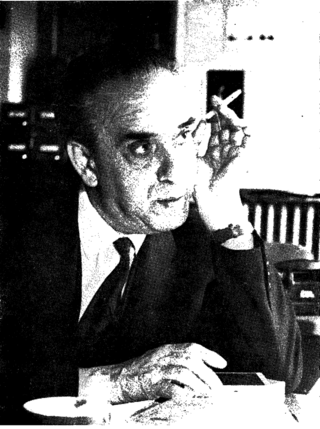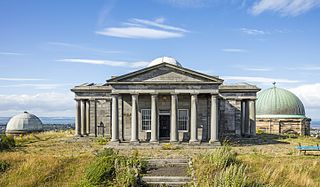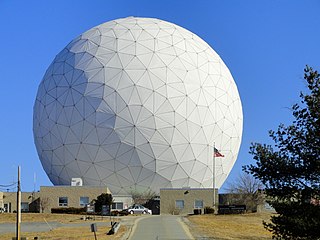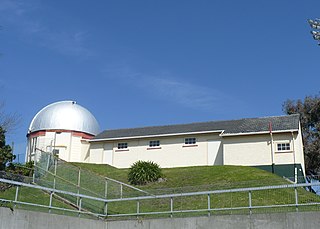
The Lick Observatory is an astronomical observatory owned and operated by the University of California. It is on the summit of Mount Hamilton, in the Diablo Range just east of San Jose, California, United States. The observatory is managed by the University of California Observatories, with headquarters on the University of California, Santa Cruz campus, where its scientific staff moved in the mid-1960s. It is named after James Lick.

The David Dunlap Observatory (DDO) is an astronomical observatory site in Richmond Hill, Ontario, Canada. Established in 1935, it was owned and operated by the University of Toronto until 2008. It was then acquired by the city of Richmond Hill, which provides a combination of heritage preservation, unique recreation opportunities and a celebration of the astronomical history of the site. Its primary instrument is a 74-inch (1.88 m) reflector telescope, at one time the second-largest telescope in the world, and still the largest in Canada. Several other telescopes are also located at the site, which formerly also included a small radio telescope. The scientific legacy of the David Dunlap Observatory continues in the Dunlap Institute for Astronomy & Astrophysics, a research institute at the University of Toronto established in 2008.

Jean-Henri Focas was a Greek-French astronomer, painter, designer, illustrator, astrophysicists, photographer, and celestial cartographer who spoke five languages. He performed visual studies of planetary surfaces from the National Observatory of Athens, Pic du Midi, and Meudon Great Refractor. Jean is responsible for creating the most highly visual map of Mars ever created by a visual observer of the planet. He developed special photographic equipment to photograph celestial phenomena. In 1961, he published Étude Photométrique et Polarimétrique des Phénomènes Saisonniers de la Planéte Mar which became a classic on the subject of polarimetric investigation of Mars. A crater on the Moon and a crater on Mars were named after him because of his contribution to the field.
Hidden Valley may refer to:

The City Observatory was an astronomical observatory on Calton Hill in Edinburgh, Scotland. It is also known as the Calton Hill Observatory.

The South African Astronomical Observatory (SAAO) is the national centre for optical and infrared astronomy in South Africa. It was established in 1972. The observatory is run by the National Research Foundation of South Africa. The facility's function is to conduct research in astronomy and astrophysics. The primary telescopes are located in Sutherland, which is 370 kilometres (230 mi) from Observatory, Cape Town, where the headquarters is located.

Cypress Hills Interprovincial Park is a natural park in Canada straddling the Alberta / Saskatchewan boundary and jointly administered by the two provinces. Located south-east of Medicine Hat in the Cypress Hills, it became Canada's first interprovincial park in 1989.

The Royal Observatory, Edinburgh (ROE) is an astronomical institution located on Blackford Hill in Edinburgh. The site is owned by the Science and Technology Facilities Council (STFC). The ROE comprises the UK Astronomy Technology Centre (UK ATC) of STFC, the Institute for Astronomy of the School of Physics and Astronomy of the University of Edinburgh, and the ROE Visitor Centre.

The Godlee Observatory is an old astronomical observatory located in a tower on the roof of the University of Manchester's Sackville Street Building, G floor, in the City Centre of Manchester, England. It was given to the city of Manchester by Francis Godlee when construction was completed in 1902. The dome is constructed out of papier-mâché and is reached by an Edwardian era wrought iron staircase and a trap door.

Haystack Observatory is a multidisciplinary radio science center, ionospheric observatory, and astronomical microwave observatory owned by Massachusetts Institute of Technology (MIT). It is in Westford, Massachusetts, in the United States, about 45 kilometers (28 mi) northwest of Boston. The observatory was built by MIT's Lincoln Laboratory for the United States Air Force and was called the Haystack Microwave Research Facility. Construction began in 1960, and the antenna began operating in 1964. In 1970 the facility was transferred to MIT, which then formed the Northeast Radio Observatory Corporation (NEROC) with other universities to operate the site as the Haystack Observatory. As of January 2012, a total of nine institutions participated in NEROC.
Warren Rupp Observatory is an astronomical observatory owned and operated by Richland Astronomical Society. Built in 1985, it is located on the Friendly House Hidden Hollow Camp south of Mansfield, Ohio, United States.
Anderson Mesa Station is an astronomical observatory established in 1959 as a dark-sky observing site for Lowell Observatory. It is located at Anderson Mesa in Coconino County, Arizona, about 12 miles (19 km) southeast of Lowell's main campus on Mars Hill in Flagstaff, Arizona.

Melbourne Observatory is an observatory located on a hill adjacent to the Royal Botanic Gardens Victoria. The observatory commenced operations in 1863 and was decommissioned from official Government work in 1945. The observatory has since continued as an astronomical observatory and remains open to the public. Melbourne Observatory is also permanently on the Australian National Heritage List under 'Melbourne's Domain Parkland and Memorial Precinct' since early 2018.

The Ward Observatory is an astronomical observatory in Whanganui, New Zealand. Built in 1901 and administered by the Wanganui Astronomical Society, it is named after Joseph Ward (1862–1927), the society's first president and longtime director of the observatory. It houses a 9+1⁄2 inches (24 cm) telescope, the largest unmodified refractor telescope in use in New Zealand.

Mykolaiv Observatory is an astronomical observatory in Mykolaiv, Ukraine.

The Georgetown University Astronomical Observatory was founded in 1841 by Father James Curley of the Department of Physics at Georgetown College. Father Curley chose a site on the college grounds, planned the building, and supervised its construction to its completion in 1844. Costs were initially paid by Rev. Thomas Meredith Jenkins, S.J., and Rev. Charles H. Stonestreet, S.J., who were Georgetown professors at the time. The observatory was used in 1846 to determine the latitude and longitude of Washington, D.C., which Curley determined to be latitude 38°54′26N and longitude 5h8m18.29s.
The Canopus Hill Observatory, located approximately 12 km from Hobart in Tasmania, Australia, is an optical astronomy observatory belonging to the University of Tasmania (UTAS). Due to the high southern latitude, the Canopus Hill Observatory is able to observe and study the Magellanic Clouds. However, the observatory has closed down due to the "encroaching light pollution from the Hobart suburbs". According to the Astronomical Society, light pollution reduces the vision of the night sky, becoming a "major menace to amateur and professional astronomers alike".
Rosemary Hill Observatory (RHO) is an astronomical observatory located near the town of Bronson, Florida (USA), about 38 kilometers southwest of Gainesville, Florida. The observatory is owned and operated by the University of Florida, and opened in 1967. It has two telescopes and dormitories for extended observing runs.
The Portage Lake Observatory (PLO) was an astronomical observatory owned and operated by the University of Michigan (UM). It was located near the village of Dexter, Michigan (USA), about 20 kilometers northwest of Ann Arbor. Construction at the site began in 1948, and the facility was closed in 1975.

The Royal Observatory, Cape of Good Hope, is a former scientific institution in South Africa. Founded by the British Board of Longitude in 1820, its main building is now the headquarters building of the South African Astronomical Observatory.














